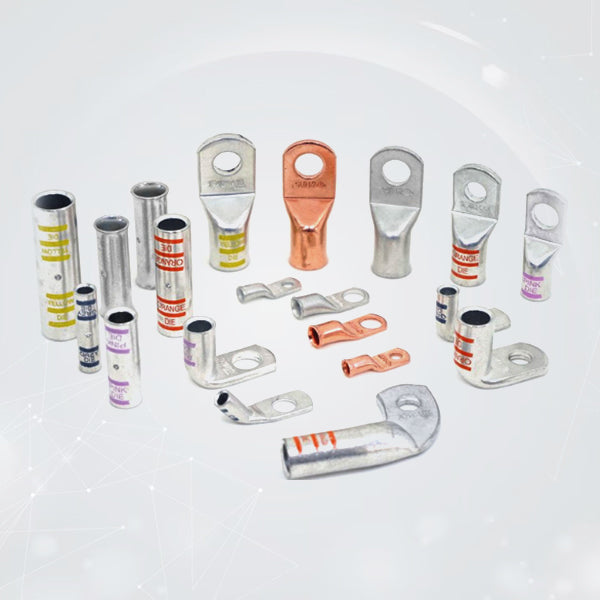
Decoding Terminal Technologies: A Technical Exploration of Tubular Ring Terminals vs. Stamped/ Formed Terminals
In the intricate world of electrical connections, terminal connectors serve as critical components, and among them, tubular ring terminals and stamped/ formed terminals stand out as distinctive players. Delving into the technical intricacies of these components sheds light on their unique attributes and applications within diverse electrical systems.
1. Tubular Ring Terminals: Precision Engineering at Its Core:
Tubular ring terminals are characterized by their cylindrical structure, featuring a central hole for precise wire insertion. Crafted from high-quality metals, such as copper or brass, these terminals offer superior conductivity, resistance to corrosion, and durability. Tubular ring terminals form the core of SELTERM’s product portfolio.
Key Technical Features of Tubular Ring Terminals:
- Construction Material: Tubular terminals are often composed of seamless tubes made from copper or brass, ensuring a robust and reliable structure.
- Conductivity: The seamless design and high-quality materials contribute to excellent electrical conductivity, minimizing power loss and promoting efficiency. SELTERM copper terminal lugs are made from 99.9% pure copper for maximum current flow.
- Versatility: With various sizes available, tubular ring terminals accommodate a wide range of wire gauges, making them versatile for different applications. SELTERM offers 120 different sizes of tubular ring terminals.
2. Stamped/ Formed Terminals: Efficiency in Mass Production:
Stamped or formed terminals undergo a manufacturing process involving the stamping or forming of sheet metal. This results in a flatter, more simplistic structure, making these terminals practical for cost-effective mass production.
Key Technical Features of Stamped/ Formed Terminals:
- Manufacturing Process: Stamped terminals are produced through sheet metal stamping or forming processes, making them cost-effective for large-scale production.
- Simplicity in Design: The flat structure of stamped/ formed terminals simplifies their design, which can be advantageous in applications where a basic connection suffices.
- Mass Application: Due to their cost-effectiveness, Bare copper ring terminals find widespread use in applications requiring large quantities, such as consumer electronics.
Distinguishing Factors: A Technical Comparative Overview:
- Material Composition: Tubular ring terminals, crafted from high-quality metals, provide enhanced durability and conductivity. Stamped/ formed terminals, often manufactured from sheet metal, prioritize cost-effectiveness over material robustness.
- Applications: Tubular ring terminals excel in environments demanding precision and durability, such as automotive, aerospace, and industrial sectors. For instance SELTERM tubular terminals are OEM’s choice due to its high level of durablility. Stamped/ formed terminals, due to their economical production, are prevalent in mass applications, including consumer electronics and appliances.
- Versatility: Tubular ring terminals, with their seamless construction and diverse size options, offer versatility across a spectrum of wire gauges and applications. Stamped/ formed terminals, while cost-effective, may have limitations in terms of wire gauge compatibility and versatility.
Choosing the Right Terminal: A Technical Decision-Making Process:
Selecting between tubular ring terminals and stamped/ formed terminals requires a thorough consideration of technical requirements. Factors such as material composition, conductivity, cost-effectiveness, and the complexity of the connection must be weighed against the specific demands of the electrical application.
In Conclusion: Navigating the Terminal Terrain:
The selection between tubular ring terminals and stamped/ formed terminals is nuanced and demands a technical understanding of their respective strengths. Whether it's the precision engineering of Ring terminal connectors or the efficiency in mass production offered by stamped alternatives, each has its place in the realm of electrical connections. Armed with this technical insight, engineers and industry professionals can make informed decisions, ensuring optimal performance and longevity in their electrical systems.





